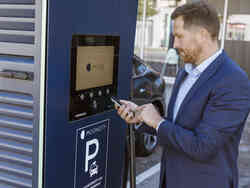
Types of drive of electric vehicles
What types of drive are there?
For electric cars, a distinction is generally made between two different types of drive:
Hybrid drives (e.g. MHEV, PHEV)
- Electric drives (BEV)
Hybrid drives (HEV)
If you’ve ever read the abbreviation HEV or PHEV, then you’ve presumably come across some information about hybrid drives before. A conventional vehicle is driven by a combustion engine, while an electric vehicle is driven by an electric motor. A hybrid vehicle, then, is a combination of the two types of drive. A distinction is made between two different types:
a) Mild Hybrid Electric Vehicle (MHEV):
In this variant, the combustion engine is supported by an electric motor. The latter is unable to power the vehicle by itself, but does help to save fuel. In many vehicles, a high-power 48-volt generator, known as a [1}belt-driven starter generator{2], helps with starting up the engine, the initial start or gliding without the combustion engine.
Gliding is when the combustion engine is disconnected while driving in a defined speed range, meaning that the vehicle continues to move without the engine for a certain amount of time (for example 30 seconds). As soon as you accelerate once more, the belt-driven starter generator restarts the engine.
b) Plug-in Hybrid Electric Vehicle (PHEV):
Unlike the Mild Hybrid, with the Plug-in Hybrid, the vehicle’s electric motor is capable of powering it by itself, meaning that it can travel emission-free in city traffic, for example. What’s more, the electric motor supports the combustion engine in the partial load range as well as when accelerating (additional boost performance). Plug-in means that the battery of the vehicle can be charged externally, at the charging station or power socket.
A sophisticated drive management system regulates the economic use of both drive systems. In the majority of vehicles, however, the use of the electric drive can be influenced by selecting various driving modes.
Electric drives (BEV)
The abbreviation BEV stands for Battery Electric Vehicle. Electric cars are powered by an electric motor, whereby the high-voltage battery is used to store energy. So the high-voltage battery could be compared to the tank in a combustion engine vehicle. Both the storage capacity and the tank fundamentally determine the range of the respective vehicle.
Charging the battery is the equivalent of filling up the tank. Many electric models still feature the familiar filler cap, only that this now no longer covers the filler neck, but the charging connection. So the vehicle can easily be charged via a power socket, a wallbox or a charging station. The charge time depends on the capacity of the charging source. You can find more information about this on our landing page on the topic of charging infrastructure.
Explanation of concept: recuperation
A special feature of electric cars is recuperation or regenerative braking. It describes the use of the kinetic energy during braking. As soon as you take your foot off the accelerator in an electric car, the motor becomes a generator and feeds electric energy into the battery. This increases the range of the vehicle. The intensity of the recuperation is adjustable in many vehicles, such that it can be adapted to the specific traffic and driving situation. In many cases, the recuperation effect renders the use of the brake pedal unnecessary, enabling what is known as one-pedal driving.


